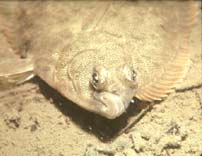MY FISH STORIES SUPPORTED BY MY OWN PICTURES





This was the first time that I worked a scanner program on another computer. I was able to load them on a 2MB floppy and transfer it onto my computer. I used photosuite 3 to crop to save space and expediate uploading.
The pictures represent: my father holding my brothers 4 l/4 pound snowshoe flounder, I am 12 years old holding my 7 l/2 pound doormat fluke, I am holding a 5 lb. plus tea wreck blackfish, my friend Richard M. holding a Montauk sea flounder, a picture taken,developed and printed by my brother of the 6 and 5 pound doormat fluke that me and my father caught, the front of my glastron boat, and finally a bushell basket full of flounders caught off Gardiners Island not far from 3 mile harbor(camera was a WERRA with a tessar lens-it took great pictures)


















